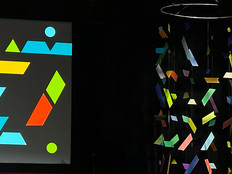The Touchy Relationship Between Social Media and Admissions [Infographic]
Admissions departments love it, and students hate. But social media really does offer a glimpse into the world of a potential student, whether students like it or not. Colleges are wisely leveraging social media for the entire admissions process. Everything from campus tours to social marketing are powering admissions offices all over the country. Ninety-eight percent of colleges in the United States have a Facebook page, and more than 80 percent of high school students use social networking sites. To universities, it’s a perfect match.
It would be the rare student who appreciates having their Facebook photos viewed by their future school, many kids are engaging with school fan pages to learn more about student life. Social media has been, and probably will remain, a controversial topic in higher education, but the benefits to both students and administrations cannot be ignored.
As computer scientists are quick to point out, most of the apparently new characteristics of social media existed long before the advent of Facebook. Since the early 1970s, internet applications have allowed users to exchange messages with each other, maintain personal profiles, curate lists of ‘friends’ and write blog-like journal entries. It is therefore important to remember from the outset that ‘the web has always been social’ (Halpin and Tuffield, 2010). Yet while the technical necessity of re-branding and re-versioning the web ‘2.0’ may be challenged, the current generation of social media applications are undeniably distinct from the earlier internet in terms of scale of use. Unlike the web tools of even 10 years ago, contemporary social media are used by hundreds of millions of users . . . As such, the social media of the 2010s now boast a sufficient critical mass of users and applications to be of genuine collective benefit and social significance. As Christakis and Fowler (2009: 30) conclude, ‘as part of a social network, we transcend ourselves for good or ill, and become a part of something much larger’.
Read the full social media essay from Education Arena, and check out the infographic below.

This infographic originally appeared on Visual Alliance Media.








